Freedom Movements of Mahatma Gandhi
Freedom Movements of Mahatma Gandhi: Mahatma Gandhi the “Father of the Nation” has led almost all the freedom movements in India. The freedom movements led by Mahatma Gandhi followed the path of non-violence to fight against British rule and get back the freedom of India. The freedom Movements of Mahatma Gandhi included the most famous and historic movements of all time.
The freedom movement of Mahatma Gandhi includes Champaran Movement in 1917, Kheda Movement in 1918, Khilafat Movement in 1919, Non-cooperation Movement in 1920, the Quit India Movement in 1942, and Civil Disobedience Movement.
Year-Wise Freedom Movements of Mahatma Gandhi
| Sl.No | Year | Freedom movements |
| 1. | 1917 | Champaran Movement |
| 2. | 1918 | Kheda Movement |
| 3. | 1919 | Khilafat Movement |
| 4. | 1920 | Non-cooperation Movement |
| 5. | 1942 | Quit India Movement |
Also Read: Gandhi Jayanti: History, Importance, and Significance
Major Freedom Movements of Mahatma Gandhi
Mahatma Gandhi played a significant role in the Indian freedom struggle. His freedom movements against the British government successfully awarded India with its freedom. All the freedom movements he led were based on only one ideology ‘Non-Violence’. The biggest lesson he gave us during the freedom struggle was to never give up and chose violence to make ourselves win.
1.Champaran Movement, 1917:
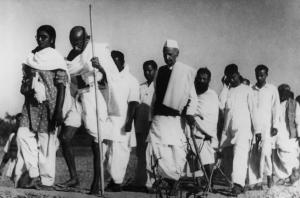
Indigo farmers of the Champaran district of Bihar have miserable conditions under the Tinkathiya System. The Tinkathiya System forces the farmers or cultivators to cultivate indigo on the best 3/20th part of their land and forces them to sell it at a cheaper price. Due to the worsening weather conditions, farmers were unable to grow the required quantity and pay heavy taxes.
Observing all the situations of farmers, Rajkumar Shukla decided to meet Mahatma Gandhi and ask him for help. He went to Lucknow and invited Gandhiji. Mahatma Gandhi reached Champaran and approached the civil disobedience movement. He launched strikes and demonstrated against the landlords in Champaran. The government had to set up Champaran agrarian committee with Gandhi ji as a member. Seeing all the protests and aggression of the farmers, the government decided to accept the demands of the cultivators.
2. Kheda Movement, 1917:
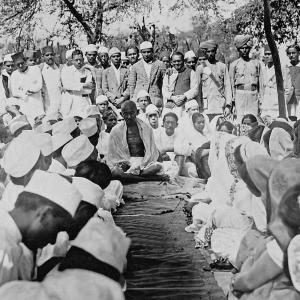
Kheda Movement was a no-tax campaign that was started by Mohan Lal Pandey in 1917. He demanded the remission of taxes due to the poor situation of crops or harvests in Kheda, Gujarat. Mahatma Gandhi joined the movement on 22nd March 1918. Mahatma Gandhi started the satyagraha and he was joined by Vallabhbhai Patel and Indulal Yagnik. The demands of the farmers were later accepted by the British government.
3. Khilafat Movement, 1919:
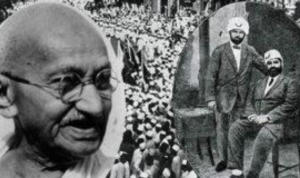
The Khilafat Movement was started by the Ali brothers. The movement was to show denial and protest against the unjust done with Turkey after the first world war. The protest movement was launched by Mahatma Gandhi against British rule. The movement demanded to restore the collapsing status of the Caliph in Turkey. Soon, the All-India Conference was held in Delhi, where Mahatma Gandhi was elected as the President.
4. Non-cooperation Movement, 1920:
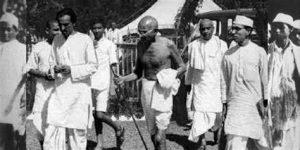
Non-cooperation Movement was launched by Mahatma Gandhi in 1920. The horrific incident of Jallianwala Bagh led to the commencement of the Non-cooperation Movement. Mahatma Gandhi convinced the people of India with the help of congress to start the Non-cooperation Movement. The movement started peacefully and calmly which is the ideology Mahatma Gandhi followed to get freedom in India.
He then framed the concept of swaraj and it is one of the most crucial elements in the Indian freedom struggle. During the Non-cooperation Movement people started boycotting the products of the British government and their establishments like schools, colleges, government offices, etc. However, the movement was ended by Mahatma Gandhi after the Chauri Chaura incident in which 23 police officers were killed.
5. Civil Disobedience Movement, 1930:
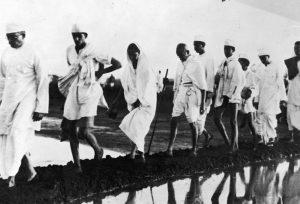
The Civil Disobedience Movement was started by Mahatma Gandhi in 1930 and is credited for paving the way for freedom in India. The movement was launched after the observance of Independence Day in 1930.
The movement commenced with the Dandi March on 12th March 1930. Gandhi ji with 78 other members left Sabarmati Ashram on foot and reached Dandi to break the salt law. The production of salt was considered illegal and was controlled by the government. After this event, the civil disobedience movement was accepted all across the country.
Also Read: 75 Facts About India on 75th Indian Independence Day which Everyone Must Know
FAQs Related to Freedom Movements of Mahatma Gandhi
1. What is the role of Mahatma Gandhi in the freedom movement in India?
Ans. Mahatma Gandhi led almost all the freedom movements in India and made them historic. He led the freedom movement in India against British rule using nonviolence.
2. What was the first civil disobedience movement by Mahatma Gandhi?
Ans. The first disobedience movement by Mahatma Gandhi was the Champaran Movement in 1917.
3. What are the freedom movements led by Mahatma Gandhi?
Ans. Mahatma Gandhi led Champaran Movement, Kheda Movement, Non-cooperation Movement, Khilafat Movement, and Quit India Movement.
4. When was the Non-cooperation Movement launched by Mahatma Gandhi?
Ans. The Non-cooperation Movement was launched in 1920 by Mahatma Gandhi.
5. Why did Mahatma Gandhi launch Quit India Movement?
Ans. Mahatma Gandhi launched a mass civil disobedience movement in 1942 and started the Quit India Movement. It forced the British to leave India and a huge number of people supported this movement.

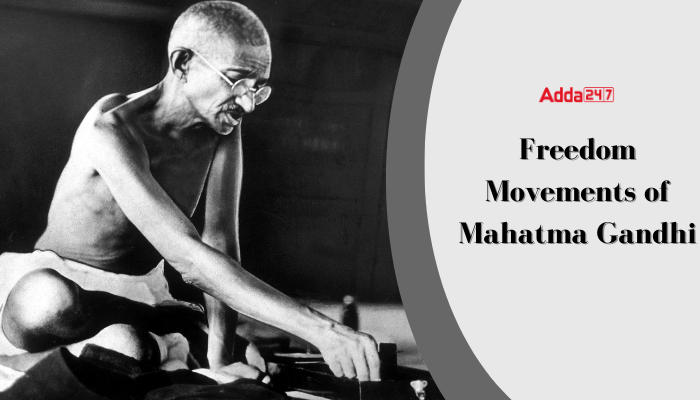

 Indian Olympic Medal Winners List Till N...
Indian Olympic Medal Winners List Till N...
 Who is the Inventor of the Gramophone?
Who is the Inventor of the Gramophone?
 HS Dhaliwal Appointed New DGP Of Andaman...
HS Dhaliwal Appointed New DGP Of Andaman...
